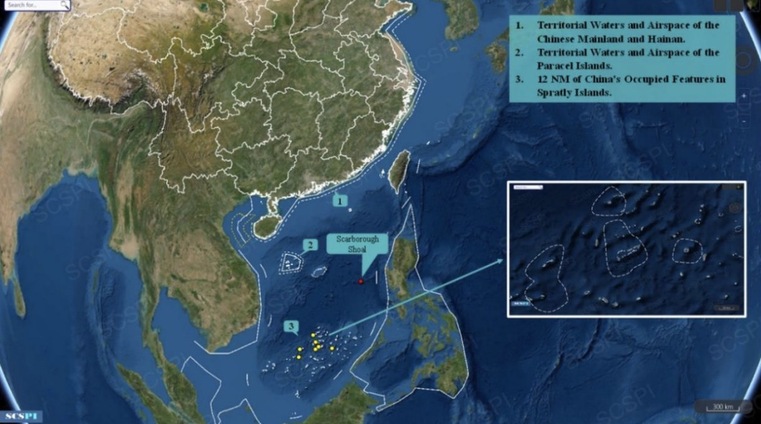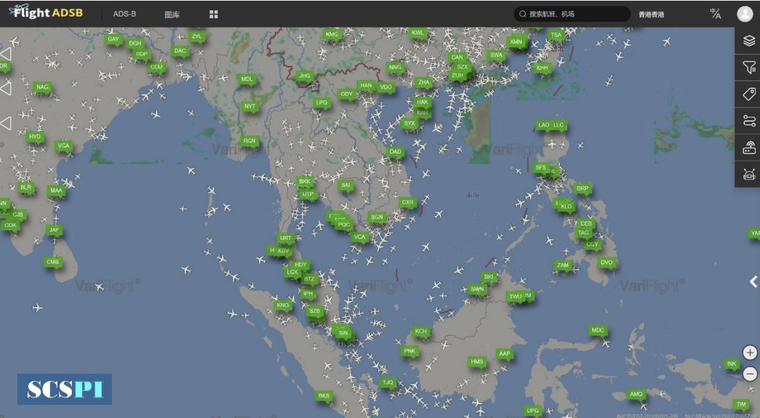In-depth: Real risks affect navigation and overflight in the South China Sea
On September 27, the Chinese think tank South China Sea Strategic Situation Probing Initiative (SCSPI) released the Report on the Navigation and Overflight in the South China Sea (hereinafter referred to as the “Report”) in Beijing.
The Report points out that the South China Sea is one of the most prosperous, busiest, and most open seas in the world. At the same time, it emphasizes that the concept of “freedom of navigation” supported by international law is fundamentally different from the so-called “freedom of navigation operations” propagated by the United States. China’s responses to foreign maritime and airspace infringements are in line with international norms and are legitimate and lawful.
What are the risk factors affecting freedom of navigation and regional security in the South China Sea? What is the true purpose behind the U.S. so-called “freedom of navigation operations”? Voice of the South China Sea (VSCS) of China Media Group interviewed the lead author of the report, Hu Bo, Director of the SCSPI, and Chen Xiangmiao, Deputy Director of the Institute of Maritime Science at the National Institute for South China Sea Studies, for an in-depth interpretation.

(Three Specific Areas Where Foreign and Chinese MilitaryEngage in Confrontational Air and Maritime Encounters)
VSCS: What are the current characteristics of navigation and overflight in the South China Sea? What was the initial intent behind publishing this Report?
Hu Bo: We organized experts from relevant fields and, using big data and artificial intelligence, conducted interdisciplinary and multi-perspective research to compile the report on the navigation and overflight situation in the South China Sea. In this Report, we let the numbers speak for themselves: Every year, millions of civilian vessels and aircraft operate in the South China Sea, and each year, countries both within and outside the region conduct military activities, including over 20,000 ship-days of surface forces, and over 30,000 flights of military aircraft and other air forces.
Therefore, the South China Sea is the busiest sea in the world, the most prosperous sea, and from the perspective of military activity, the most open sea in the world. Our intent in publishing this Report is to restore the truth about the situation of navigation and overflight in the South China Sea.
VSCS: The Report specifically emphasizes that the “freedom of navigation” supported by international law is fundamentally different from the “freedom of navigation operations” propagated by the US. In your view, what is the biggest difference between “freedom of navigation” and “freedom of navigation operations”?
Hu Bo: “Freedom of navigation” is a concept recognized by international law and widely supported by the international community. It is fundamentally aimed at protecting the fair maritime rights and interests of all countries and maintain the global maritime order. The “freedom of navigation operations” is a concept invented by the U.S. and is not supported by international law. Essentially, “freedom of navigation operations” are actions the U.S. initiated in the late 1970s when it believed that the United Nations Convention on the Law of the Sea might pose a threat to the U.S. military’s freedom of access to global waters. The operations mainly involve using military force to challenge what the U.S. government considers other countries’ “excessive maritime claims.” Therefore, the U.S.-led “freedom of navigation operations” are nothing more than blatant hegemony—an action and concept developed outside the framework of international law.

VSCS: Through case studies and data analysis, the Report also identifies four typical situations that affect the safety of navigation and overflight in the South China Sea. In practice, the U.S. often accuses China of “dangerous” and “unprofessional” intercepts during its provocations in the South China Sea. Who is the real risk in the South China Sea?
Hu Bo: The U.S.’s accusations of “unprofessional” and “dangerous intercepts” are a complete misrepresentation. When it comes to actions that threaten national sovereignty and territorial security, including the safety of personnel stationed on islands and reefs and relevant platforms, I believe any country would take necessary countermeasures. These actions are different from normal military exercises or training activities. The U.S.’s excessive reconnaissance activities, its incursions into China’s territorial waters and airspace over the Xisha Qundao, and its violations of China’s exercise warning zones are prime examples of situations that affect the safety of navigation and overflight in the South China Sea. The U.S. frequently touts its “freedom of navigation operations” around China’s Nansha Qundao, but this is clearly a political ploy to pressure China with gunboat diplomacy.
VSCS: According to previously released data from the SCSPI, in 2023, U.S. carrier strike groups and amphibious ready groups entered the South China Sea eight times, and at least 11 attack submarines and two strategic missile submarines were spotted in the South China Sea and surrounding waters. As a non-regional country, how do these escalated U.S. military activities under the guise of “freedom of navigation operations” impact peace and stability in the South China Sea?
Chen Xiangmiao: The so-called “freedom of navigation operations” conducted by the U.S. disregard international law and recklessly intrude into the waters of other countries. This increases the risks to the safety of shipping lanes and raises the risk of incidents leading to conflict. Additionally, the U.S.’s frequent military activities will escalate regional military tensions and challenge the regional security landscape. Instead of making the shipping lanes more free and secure, these operations have complicated the region’s security situation.

(Aerial Real-time Situation in the South China Sea and Surrounding Areas on September 4, 2024)
VSCS: The South China Sea is a shared home for regional countries. What efforts have China and neighboring countries made to maintain freedom of navigation and the safety of shipping lanes in the South China Sea?
Chen Xiangmiao: For a long time, China and its neighboring countries have enhanced communication and cooperation to jointly maintain freedom of navigation and the safety of shipping lanes in the South China Sea, demonstrating the concept of building a maritime community with a shared future.
First, China and ASEAN countries have reached a consensus in the Declaration on the Conduct of Parties in the South China Sea to cooperate in safeguarding the safety of shipping lanes in the South China Sea. Second, China has actively provided maritime public services, including the construction of large multifunctional lighthouses on islands and reefs in the South China Sea, offering guidance, safety information, and emergency rescue services to vessels from various countries. The South China Sea Tsunami Advisory Center has also been providing services to nine countries in the region. Moreover, China has actively advocated for practical cooperation with ASEAN countries in maritime search and rescue, among other fields. These measures demonstrate who is truly the strong force in maintaining peace and stability in the South China Sea.














